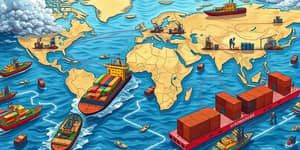
Global events reshape the economic landscape, influencing investments, trade, and stability everywhere.
Geopolitical risks encompass the complex web of political, economic, military, and social challenges that arise when nations engage in international affairs. From power shifts to armed conflicts, these risks can trigger heightened uncertainty and volatility across markets.
When a crisis unfolds, investors frequently demand higher returns to compensate for added danger. As a result, asset classes from equities to sovereign bonds can experience rapid repricing, and supply chains may face sudden disruptions.
Today’s geopolitical landscape is marked by several flashpoints that command attention:
Market reactions to geopolitical upheavals can be swift and severe. In emerging markets, stock indices may slump by up to 5 percentage points in a single month during intense conflict phases. Investors often seek safe havens like gold or government bonds, pushing yields on sovereign debt lower in established economies.
These dynamics also affect borrowing costs for governments. Sovereign risk premiums can jump by 30 to 45 basis points within days of major escalations, increasing the cost of funding budgets already strained by pandemic-era deficits.
Financial institutions and corporations can reduce vulnerability to geopolitical shocks by embedding risk considerations into every decision. A holistic risk management approach accounts for political, economic, and supply chain factors in tandem.
By preparing for multiple contingencies, organizations can preserve operational continuity even amid severe disruptions.
Economic projections indicate global growth slowing to approximately 2.3% in 2025, partly due to rising trade barriers and persistent regional tensions. Inflation may remain above central bank targets as energy and food prices stay elevated.
Investors face a challenging environment where market resilience depends on adaptability and strategic foresight. Those who adjust portfolio exposures and cost structures early may capture opportunities generated by market dislocations.
Quantifying geopolitical risk helps investors and policymakers gauge the potential fallout of international crises. Indices like the Geopolitical Risk (GPR) Index analyze media coverage to assign numerical scores to unfolding events.
Other frameworks combine expert assessments with real-time data on trade flows, commodity prices, and military activity. Integrating these tools into decision-making processes enhances transparency and responsiveness.
Ultimately, navigating a world of rising geopolitical uncertainty demands both vigilance and vision. Organizations that embed risk awareness into their culture, invest in robust analytics, and foster long-term resilience planning will be better positioned to thrive.
By understanding how global events sway markets, leaders can make informed choices that protect stakeholders and capture value, even when the path ahead is unclear.
References













